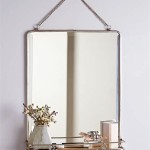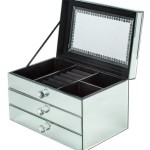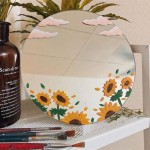Antique Hand Mirrors: Silver Elegance and Reflections of the Past
Antique hand mirrors crafted from silver offer a glimpse into a bygone era of elegance and craftsmanship. These beautiful objects, often adorned with intricate designs and hallmarks, serve as both functional items and historical artifacts. Collecting antique silver hand mirrors offers a fascinating journey into the artistry and social customs of the past, allowing collectors to appreciate the evolution of design and the stories these mirrors hold.
Hallmarks and Identifying Silver Content
One of the most critical aspects of evaluating antique silver hand mirrors is identifying the silver content and authenticity through hallmarks. Hallmarks are tiny stamps or engravings applied to silver items to indicate the maker, purity, and place of origin. Different countries and periods employed unique hallmarking systems, creating a complex yet fascinating code for collectors to decipher. Learning to identify and interpret these hallmarks can help determine a mirror's age, origin, and intrinsic value. Resources such as hallmark identification books and online databases can prove invaluable in this process.
Styles and Design Evolution Across Eras
The styles and designs of antique silver hand mirrors have evolved significantly throughout history, reflecting the prevailing aesthetic trends of each era. From the ornate Rococo designs of the 18th century to the simpler, more geometric lines of the Art Deco period, each era left its unique mark. Victorian-era mirrors often featured intricate floral motifs and elaborate engravings, while Art Nouveau mirrors embraced flowing, organic lines inspired by nature. Examining these design variations offers insights into the artistic and cultural sensibilities of different historical periods.
The Craftsmanship of Silver Hand Mirrors
The creation of antique silver hand mirrors required a high level of skill and artistry. Silversmiths employed various techniques, including chasing, repoussé, and engraving, to embellish the mirrors' frames and handles. Chasing involves hammering from the front to create a raised design, while repoussé uses hammering from the back to achieve a three-dimensional effect. Engraving, on the other hand, involves carving lines directly into the silver surface. These intricate processes resulted in exquisite, handcrafted pieces that showcase the silversmith's dedication and mastery of their craft.
The Mirror Itself: From Glass to Silvered Surfaces
While the silver frame and handle are central to the aesthetic appeal of these objects, the mirror itself also holds historical significance. Early hand mirrors often utilized polished metal surfaces, reflecting the limitations of glassmaking technology at the time. As glassmaking advanced, mirrors transitioned to glass backed with a thin layer of silvering, creating a clearer and more accurate reflection. Examining the type of mirror surface can help determine the age and manufacturing techniques employed in its creation.
Caring for Antique Silver Hand Mirrors
Preserving the beauty and integrity of antique silver hand mirrors requires careful handling and appropriate care. Silver is susceptible to tarnishing, a chemical reaction that occurs when silver is exposed to sulfur-containing compounds in the air. Regular cleaning with a soft cloth and specialized silver polish can help prevent tarnish and maintain the mirror's shine. Avoiding exposure to harsh chemicals, excessive moisture, and extreme temperatures can also help preserve the silver's delicate surface and prevent damage to the glass.
The Cultural Significance of Hand Mirrors
Beyond their functional use, antique silver hand mirrors held cultural significance. They were often given as gifts, particularly for weddings and other special occasions, symbolizing beauty, vanity, and self-reflection. Portraits from different eras often depict individuals holding hand mirrors, highlighting their status as both practical objects and fashion accessories. Understanding the social context in which these mirrors were used adds another layer of appreciation for their historical and cultural value.
Collecting and the Antique Market
The market for antique silver hand mirrors offers a wide range of styles, periods, and price points. Condition, rarity, and craftsmanship all play a role in determining a mirror's value. Reputable antique dealers, auction houses, and online marketplaces provide avenues for acquiring these unique objects. Careful research and examination are essential when purchasing antique silver hand mirrors, ensuring authenticity and appropriate valuation. Building a collection of antique silver hand mirrors can be a rewarding pursuit, combining historical appreciation with the joy of owning tangible pieces of the past.

Hand Mirrors In Antique Sterling Silver Bryan Douglas

Heavy Vintage Antique Silver Plated Ornate Vanity Hand Held Mirror 9 5x 5 25

Vintage Silver Plated Vanity Hand Mirror Antique

Hand Mirrors In Antique Sterling Silver Bryan Douglas

Antique Victorian Style Silver Hand Held Mirror

Hand Mirrors In Antique Sterling Silver Bryan Douglas

Heavy Vintage Antique Silver Plated Ornate Vanity Hand Mirror 8 75 X 5

Vintage Silver Plated Vanity Mirror Ornate Hand Make Up Art Nouveau Style Wedding Dressing Table

English Sterling Hand Mirror Birmingham 1899 For At 1stdibs Antique Value Silver Mirrors

Sterling Silver Hand Mirror








